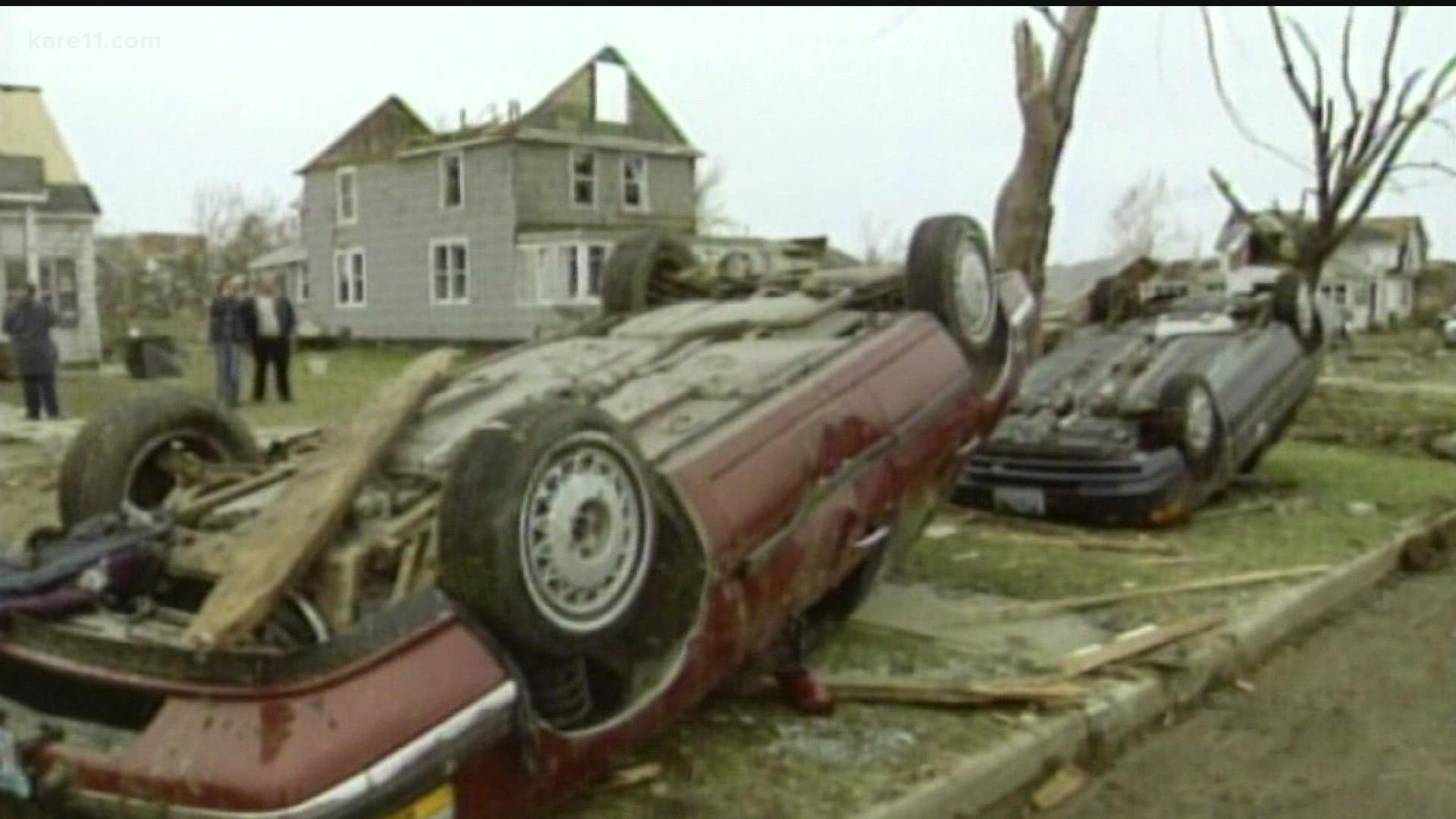MINNEAPOLIS — The day of the super storm: March 29, 1998.
It's a day few in southern Minnesota will ever forget. An intense supercell spawned 14 twisters that left a path of destruction on a scale most had never encountered.
The tornadoes hit St. Peter, Le Center and Comfrey leaving two dead and 21 others injured, and at least $300 million in damages in 1998 dollars.
"When the third siren went off, we went down into the basement. Knowing now what I know we were lucky we had as much warning as we did," Glenn Kranking, who was a student at Gustavus Adolphus College in St. Peter in 1998.
He was among about 50 students who remained in town as the spring break began and took cover as the storm approached. He grew up on the East Coast and wasn't sure exactly what to do with a siren sounded.
Kranking lived at Swedish House, a Victorian home on the edge of campus. He was there that Sunday afternoon with Elin Ahlden, a fellow resident of Swedish House, and her parents who had just arrived from Sweden to visit Minnesota.
"In the basement a couple of windows broke, and just the debris that was in the air made it difficult to breathe. Elin's mother had brought a quilt to the basement, so we wrapped it around ourselves kind of huddled together."
When they emerged from their home campus security instructed them and other students to take shelter at a nearby dormitory in case more twisters followed.
"As we were heading to that dormitory looking back at the house, we noticed the entire top half of the house was gone. That's when we realized the extent of what we had just been through."
He ran into the college president Axel Steuer, who noticed Kranking. He asked him to take as many pictures as he could to document the damage to the campus.
"I've lived on the East Coast, been in quite a few hurricanes, and never seen anything like this," Kranking recalled.
He's now a professor of history and Scandinavian studies at Gustavus, who makes sure his students know what happened to their campus 24 years ago.
"Our first instinct back then was to go outside and watch the sky, so we're lucky we didn't walk right into it," Kranking remarked.
"I try to communicate with the students to take these things seriously."
On the same day the small town of Comfrey was hit by an F-4 tornado, part of the same weather system. Three-fourths of the buildings were either damaged or destroyed, including the school and churches.
"I went back upstairs again the wind was just horrible, then I heard the train noise and headed to the basement again," Linda Wallin recalls. "I ran to the corner and sat and closed my eyes hoping my house would still be there."
Wallin, who was mayor of Comfrey at the time, emerged from her basement to find a scene of utter destruction on the town's main drag.
"My first thought when I got to the end of the street was nobody was alive. I mean there was nobody out there but me. That's the first thing I thought of," Wallin said Tuesday.
A young woman approached her to say she had been at an anniversary celebration at the community center. Everyone at the party had somehow survived by huddling together in a cloak room.
Wallin's husband's lumber yard was one of the businesses wrecked by the huge twister. But, as mayor, she had to turn her attention to helping coordinate the cleanup efforts with Brown County Emergency Preparedness authorities and the Minnesota National Guard.
"I also had my lab job to go back to, but they let me stay out for a month so I could work on the recovery," Wallin, who was a medical lab technician at the time, remembered.
For the first three years after the tornado Wallin worked three days a week on the town's recovery and three days a week at her lab job.
Comfrey's population was 446 the day of the twister, and now stands at 348. But Wallin sees hopeful signs with a new school and some businesses thriving again.
"I'm grateful for all the people that lived there and everything they did to get us back to where we are."
Watch all of the latest stories from Breaking The News in our YouTube playlist:

